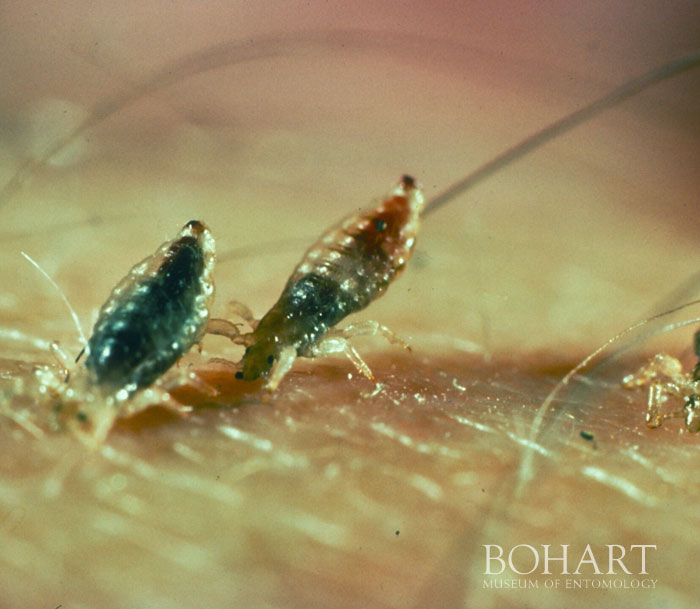HUMAN SKIN PARASITES
Download information on lice: .pdf
Lice are blood-feeding ectoparasites in all life stages. Their bites cause intense itching in areas where they feed resulting in pink papules. Large infestations can lead to crusty looking rashes with numerous black spots (blood-filled fecal pellets) from the lice. Lice are host specific and the only lice that will feed on humans are the human head louse (Pediculus humanus capitis), body louse (Pediculus humanus humanus), and crab or pubic louse (Pthiris pubis). Human lice are not known to transmit any disease-causing pathogens in North America. However, body lice are known to transmit epidemic typhus, caused by Rickettsia prowazekii, and epidemic relapsing fever, caused by Borrelia recurrentis, in some parts of the world.
Lice are flat-bodied, wingless insects. Their legs are adapted for crawling through hair or on clothing, not jumping despite myths to the contrary. Human body, head and crab lice must feed every 24 hours, and if they cannot do so they quickly starve to death.
Lice can be detected by characteristic symptoms, including persistent itching and redness, particularly on the scalp, on the back of the head, or in the pubic region (depending on the kind of louse). The eggs, or nits, can be recognized immediately: they are white to gray and are glued firmly to the base of hairs. If only nits are observed and never any lice, then the "nits" should be examined under magnification to prevent misidentification. There are instances where skin flakes and other debris in the hair can closely resemble nits. These will appear lumpy or angular and asymmetrical under magnification. Louse eggs, even when dead, appear smooth and round.
A number of common sayings actually refer to lice. Calling someone a "nitwit" is the same as saying they have the intelligence of a louse egg (nit). "Getting down to the nitty gritty" and "nit-picking" refer to the detailed work involved in removing nits. Describing someone as "lousy" implies that they have lice.
Bathroom ditty:
It does no good to stand on the seat,
Because Phthirus pubis jumps 15 feet.



